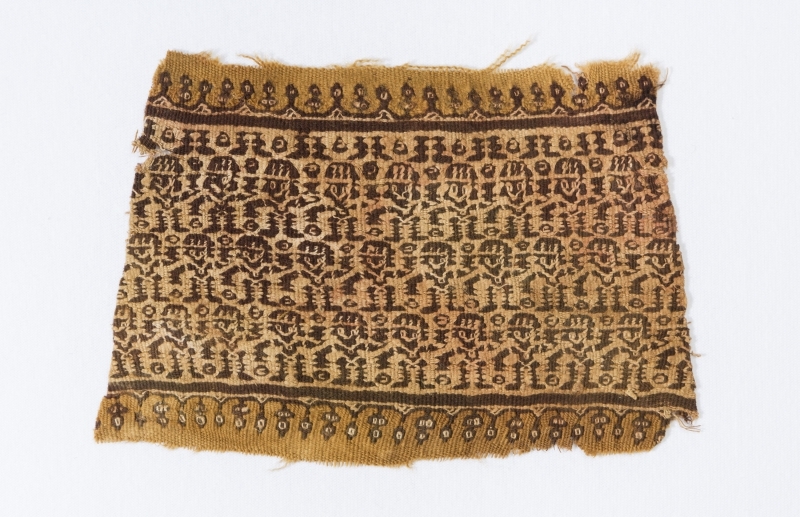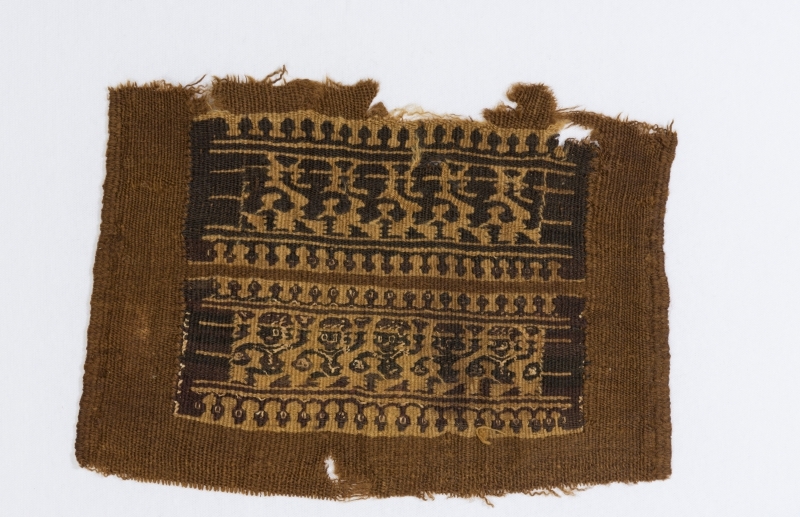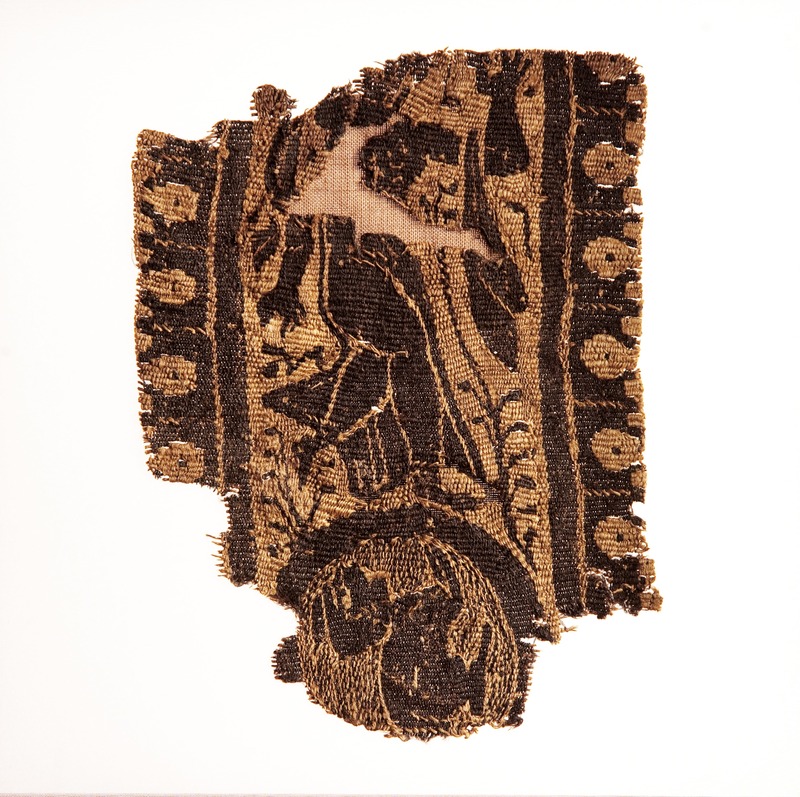Dancers
Textiles featuring dancers are not uncommon. These dancers tend to be dark in color. This is probably a necessity of the textile rather than a representation of skin tone, as they would need to be dark in order to contrast on the lighter textile. Dancers can be portrayed in varying levels of stylization.
Two of the textile fragments from the Arthur M. Sackler Foundation donation feature highly stylized dancers with feet apart, one arm up, one down, and a pair of rhythm instruments, possibly cymbals of bells. These instruments may indicate that the dancers are participating in ritual dances associated with the cult of Bacchus. Bacchus, whose Greek parallel is Dionysus, is the Roman deity of wine and ritual madness. He and his followers, called maenads or bacchants, were popular motifs in a wide variety of media. On Figure 1, detail on the figures has been created by weaving the lighter colored base textile into spots on the darker figures. On Figure 2, detail has been created by bleached white threads that were woven on top of the figures. Much of the detailing on Figure 2 has deteriorated, leaving dark figures without faces or clothes.
The Hallie Ford Museum of Art has another textile fragment in its collection featuring a less stylized dancer. The museum received this textile fragment as a gift from A. Dean McKenzie, but is serves as a useful comparison for the textile fragments from the Arthur M. Sackler Foundation. Like the more stylized dancing figures in the Arthur M. Sackler Foundation donation, this dancing figure is dark and stands with one foot forward, another foot back, one arm up, and the other arm down. Damage to the textile has destroyed the figure’s head and torso, but its posture is still apparent. The rabbit and vegetal motif below and to the sides of the dancer may serve the same purpose as the instruments on the stylized Arthur M. Sackler Foundation textile fragments, indicating that this dancer is associated with Bacchus.
REFERENCES
Du Bourguet, Pierre M. Art of the Copts. New York: Crown Publishers, Inc., 1967.
Maguire, Eunice Dauterman. Weavings From Roman, Byzantine and Islamic Egypt: The Rich Life and the Dance. University of Illinois at Urbana-Champaign: Krannert Art Museum + Kinkead Pavilion, 1999.
Noever, Peter. Fragile Ramnants: Egyptian Textiles of Late Antiquity and Early Islam. Translated by Abigail Ryan-Prohaska. Los Angeles: Schindler House, 2005.


